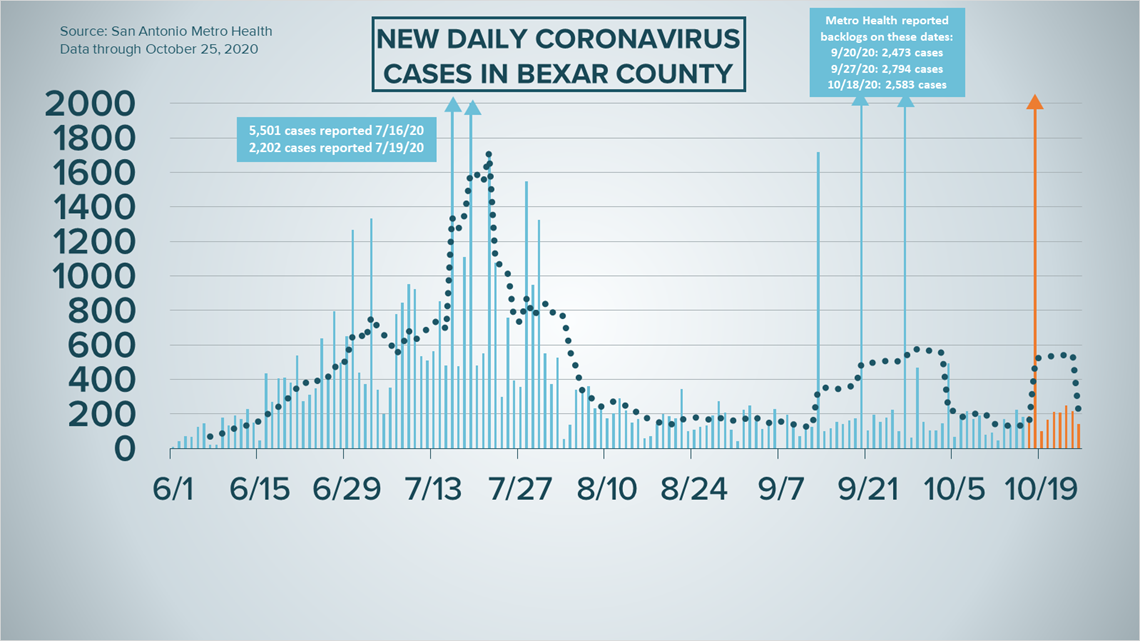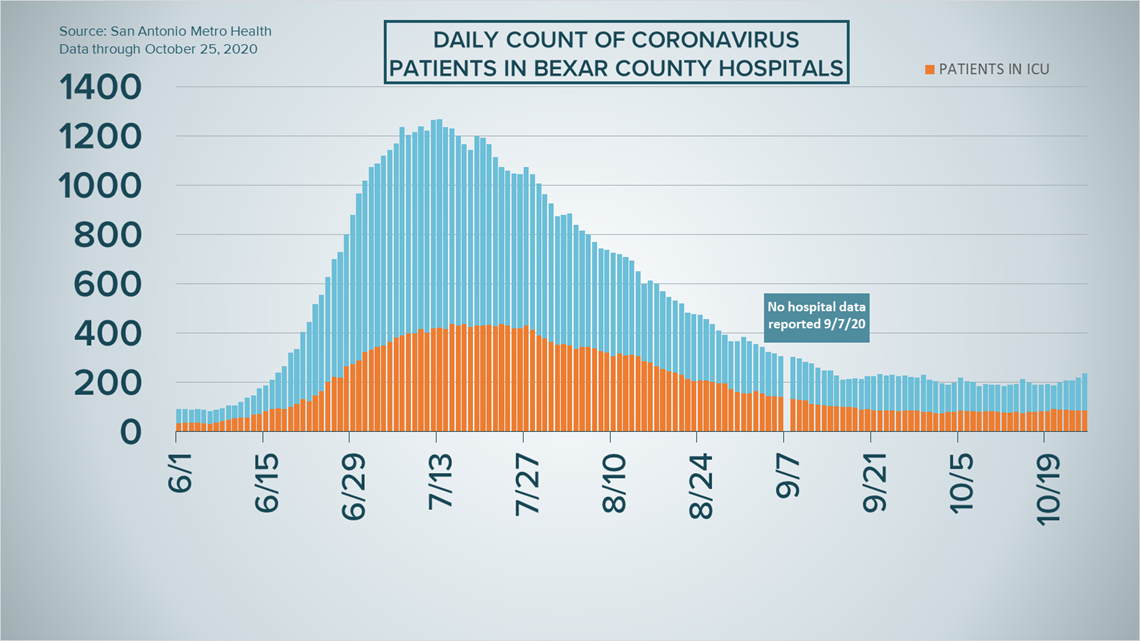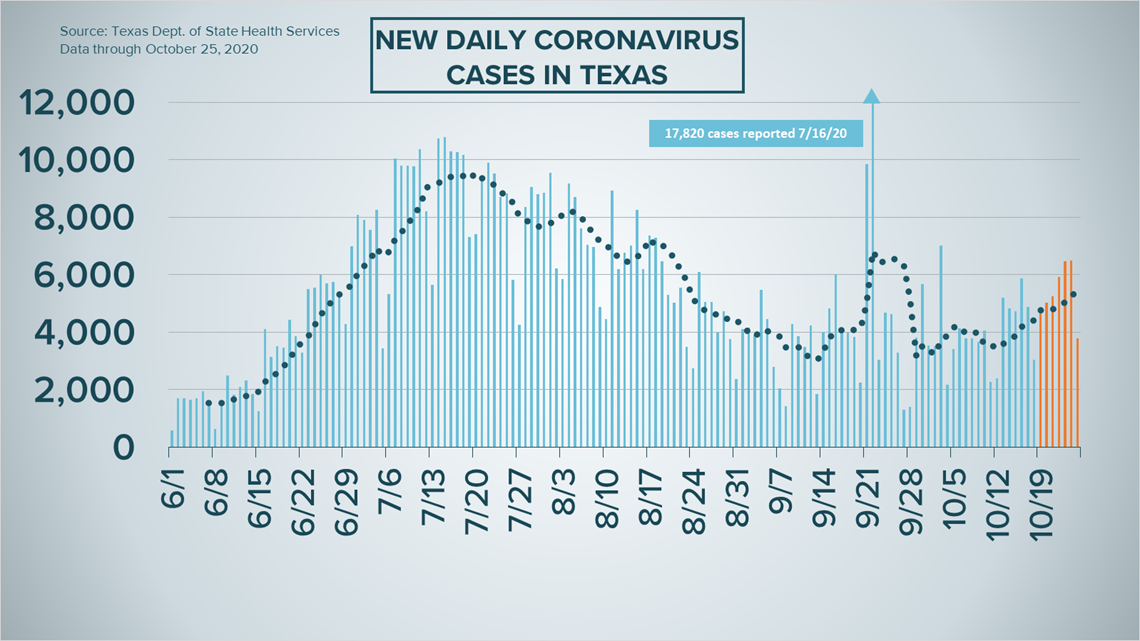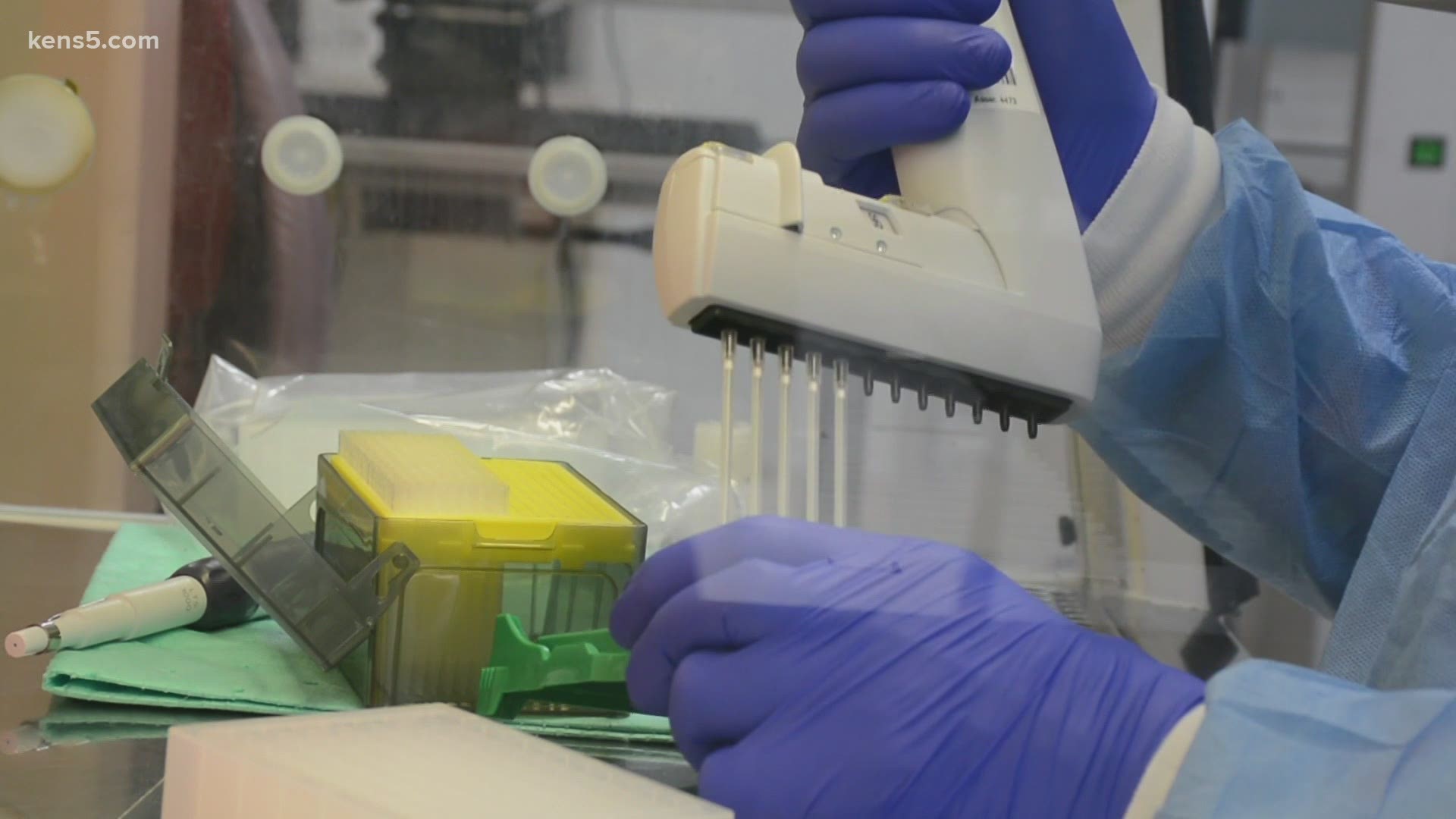SAN ANTONIO — We're tracking the latest numbers from the coronavirus pandemic in San Antonio and across Texas. Here are the latest numbers reported by Bexar and surrounding counties:
- Bexar County: 140 new cases were reported Sunday, bringing the total number of cases for the county to 64,616. No new deaths were reported, but a backlog of 15 deaths pushed the county's death toll to 1,247.
- Comal County: The county reported eight additional cases and no new virus-related deaths on Friday. There have been a total of 3,701 cases of COVID-19 in the county – including 2,841 confirmed cases – while 120 county residents have died. County officials say there are 97 active coronavirus cases, and 3,484 residents are considered recovered.
- Hays County: Officials in Hays County on Friday reported 19 new cases in the county as well as 22 additional virus-related deaths, all of which are connected to a change in reporting protocols from the Texas Department of State Health Services. As of Friday, there are a total of 6,287 lab-confirmed cases in the county (510 of which are active) while the death toll rose at 86. 5,691 residents have recovered from the virus.
How Bexar County is trending
We've tracked how many coronavirus cases have been confirmed in Bexar County from the time officials began reporting cases in March 2020. The graphic below shows the number of cases since June and charts those daily case numbers along a 7-day moving average to provide a more accurate picture of the overall coronavirus case curve in our area and the direction we're trending amid the pandemic.
On Sunday, Metro Health updated its online coronavirus-tracking dashboards to reflect an additional 140 coronavirus cases in Bexar County. Since the pandemic began, 64,616 county residents have been diagnosed with COVID-19.


No new deaths were reported, but a backlog of 15 deaths that occurred between July and early October pushed the county death toll to 1,247.
Hospitalizations rose again on Sunday to 237, up from 220 on Saturday. 87 of those patients are in intensive care, and 42 are on ventilators. This comes as Texas experiences its own surge in hospitalized patients.


Coronavirus in Texas
The number of Texans who have tested positive for the coronavirus since the pandemic began grew by 4,404 on Sunday, according to the Texas Department of State Health Services.
3,793 of those are new diagnoses over the last 24 hours, while the other 611 cases stem from a number of backlogs in several counties. More details can be found at the top of this page. In all, at least 862,375 Texans have contracted COVID-19.


State health authorities also reported 48 additional virus-related deaths on Sunday. At least 17,504 Texans have passed away from COVID-19 complications.
Meanwhile, COVID-19-related hospitalizations in Texas ticked up to 5,206. That's a jump of over 200 from the number reported Saturday. The number of patients in the hospital hovered above 3,000 at the end of September, but an October spike has brought hospitalization numbers not seen since late August.
In the last week, hospitalizations have risen by over 20%. Since Oct. 1, they've risen by 63%.
Health officials warn that the state is currently in another surge. Experts attribute the spike in COVID-19 numbers to "pandemic fatigue." On Saturday, in the wake of a record-breaking surge in west Texas cases, Gov. Greg Abbott asked the federal government for permission to use a military medical center in Fort Bliss for non-coronavirus patients, thus freeing up space in El Paso for those receiving COVID-19 treatment.
The state estimates that 755,095 Texans have recovered, while 91,885 Texans remain ill with COVID-19.
Meanwhile, the Texas Education Agency updated its online coronavirus database to show that there have been 21,013 cumulative cases among staff and students across the state as of Oct. 22. More information can be found here.
The TEA releases new data on school cases every Thursday.
Latest Coronavirus Headlines
- Pre-K 4 SA closes education center after staff members and a student test positive for coronavirus
- Top Trump aide: 'We're not going to control the pandemic'
- Vice President Pence to keep up travel despite contact with virus-infected aide
- Community Labs to expand testing to Bexar County schools
- New US coronavirus cases top 83,700 for 2nd day in row
- Surging coronavirus numbers color White House race in closing days
- Report: San Antonio's small business recovery from COVID-19 worst in the state
Coronavirus symptoms
The symptoms of coronavirus can be similar to the flu or a bad cold. Symptoms include fever or chills, cough, shortness of breath or difficulty breathing, fatigue, muscle or body aches, headache, new loss of taste or smell sore throat, congestion or runny nose, nausea or vomiting and diarrhea, according to the Centers for Disease Control.
Most healthy people will have mild symptoms. A study of more than 72,000 patients by the Centers for Disease Control in China showed 80 percent of the cases there were mild.
But infections can cause pneumonia, severe acute respiratory syndrome, kidney failure, and even death, according to the World Health Organization. Older people with underlying health conditions are most at risk.
But infections can cause pneumonia, severe acute respiratory syndrome, kidney failure, and even death, according to the World Health Organization. Older people with underlying health conditions are most at risk.
Experts determined there was consistent evidence these conditions increase a person's risk, regardless of age:
- Chronic kidney disease
- COPD (chronic obstructive pulmonary disease)
- Obesity (BMI of 30 or higher)
- Immunocompromised state (weakened immune system) from solid organ transplant
- Serious heart conditions, such as heart failure, coronary artery disease, or cardiomyopathies
- Sickle cell disease
- Type 2 diabetes
The CDC believes symptoms may appear anywhere from two to 14 days after being exposed.
Human coronaviruses are usually spread...
- Between people who are in close contact with one another (within about 6 feet).
- Through respiratory droplets produced when an infected person coughs, sneezes or talks. These droplets can land in the mouths or noses of people who are nearby or possibly be inhaled into the lungs.
- Some recent studies have suggested that COVID-19 may be spread by people who are not showing symptoms.
Help stop the spread of coronavirus
- Stay home when you are sick.
- Eat and sleep separately from your family members
- Use different utensils and dishes
- Cover your cough or sneeze with your arm, not your hand.
- If you use a tissue, throw it in the trash.

